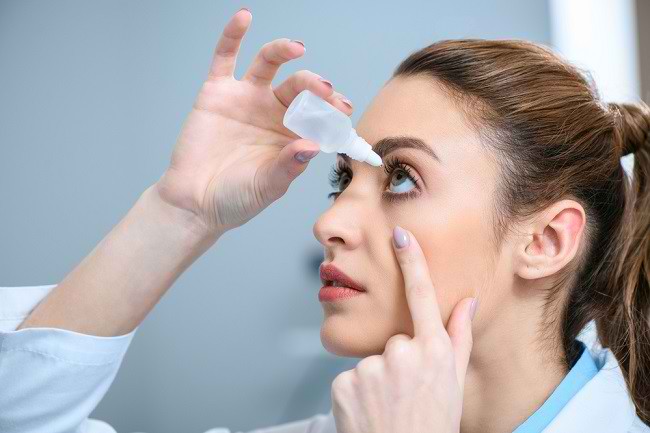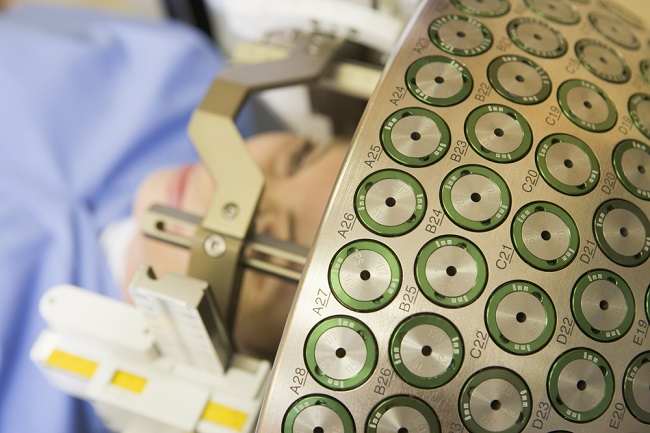Cataract surgery is necessary if the cloudiness of the lens due to cataracts has caused significant visual disturbances and affects the quality of life of the sufferer. There are several things that are important to know before undergoing cataract surgery, including the type and process.
Cataracts are characterized by clouding of the lens of the eye that can block or interfere with vision. This condition generally occurs in the elderly and can be cured with cataract surgery.

Vision Conditions for Cataract Patients
A cloudy eye lens makes a cataract sufferer experience visual disturbances, such as:
- Blurred or foggy vision
- Sensitive to light
- Double vision, especially when seeing with one eye
- Colors look faded or like yellowish and brown
- This visual impairment can gradually get worse, so the sufferer must change glasses frequently
Until now, it is not known exactly why cataracts can form. However, there are several factors that can increase the risk of cataracts, including:
- aging
- Injury to the eye
- Exposure to sunlight for a long time
- Family history of cataracts
- Malnutrition
- Smoking habit
- Diabetes
- Use of certain drugs
Although most occur in the elderly, cataracts can also occur in children or newborns. This condition is also known as congenital cataract and is usually caused by an intrauterine infection or genetic disorder.
Cataract Surgery Procedure and Some Techniques
Mild cataracts generally do not require medical treatment. However, if the lens begins to look very cloudy and the visual disturbance cannot be corrected with glasses, surgery is needed to correct it.
Cataract surgery aims to replace the cloudy lens of the eye with an artificial eye lens. Before deciding on the type and technique of cataract surgery, the doctor will perform a series of examinations, including a physical examination of the eye and supporting examinations to assess eye lens abnormalities.
You are also recommended to use eye drops as prescribed by your doctor for 1-2 days before surgery. You are also not allowed to use other drugs and cannot eat and drink for 12 hours before undergoing surgery.
There are several cataract surgery techniques that can be performed, including:
1. Phacoemulsification
This method is done by making a small incision near the cornea. Next, a small instrument is inserted and the cloudy lens is crushed using ultrasonic vibrations.
The shattered lens will be sucked out with the same tool. This technique is the most common method.
2. Cataract surgery with minimal incisions
This cataract surgery technique is almost the same as the phacoemulsification technique. It's just that the incision made is small, which is less than 1.8 mm.
3. Extracapsular cataract surgery
A surgical procedure in which an incision is made wide enough in the eye to completely remove the cloudy lens, leaving the lens capsule inside the eye.
This technique is for those whose cataracts have covered most of the eye's lens.
4. Intracapsular cataract surgery
This surgery method is done by removing the lens and the lens capsule that surrounds it. This surgery requires a larger incision than other cataract surgery techniques.
After the cloudy lens is removed, the doctor will replace it with an artificial eye lens. These lenses aim to improve vision by focusing light at the back of the eye. There are several types of intraocular lenses, namely:
- Toric lenses, to correct nearsightedness or astigmatism or cylinders
- Monofocal lens, for nearsightedness
- Multifocal lenses, so the eyes can focus at various distances, from near, medium, and far
The risk of complications from cataract surgery is very low and can be treated with medication or further surgery. Complications usually occur if you have an eye disease or have certain medical conditions.
Things to Do after Cataract Surgery
A few hours after surgery, you will usually be allowed to go home. This is because cataract surgery generally uses local anesthesia and generally takes a relatively short time, which is about 30–45 minutes.
However, you are advised to be accompanied by family or close relatives to take you home. This is because the eye's ability to see is not perfect. The eyes will be sensitive to light, blurry, and itchy for a few days after surgery.
Some steps that can be taken to help the eye recover after cataract surgery include:
- Avoid touching the eyes.
- Use eye drops as directed by your doctor to relieve postoperative discomfort.
- Make sure nothing gets into your eyes, such as soap or water.
- Don't wear make-up in the eye area for at least 4 weeks after surgery.
- Avoid swimming for 4–6 weeks.
- Don't get on a plane without a doctor's approval.
- Don't drive a vehicle until your doctor allows it.
Usually after cataract surgery, you will need to wear nearsighted or farsighted glasses or even a combination of both. This is because the artificial eyepiece cannot focus at a certain distance.
The eye can completely recover in about 2 months after surgery. Most people will experience improved vision after surgery. You will be able to see light without glare, be able to distinguish colors because they appear brighter, and be able to see objects with more focus.
If after undergoing cataract surgery you experience red eyes, pain that does not go away despite using pain relievers, nausea and vomiting, or even loss of vision, immediately consult a doctor so that appropriate treatment can be carried out.









